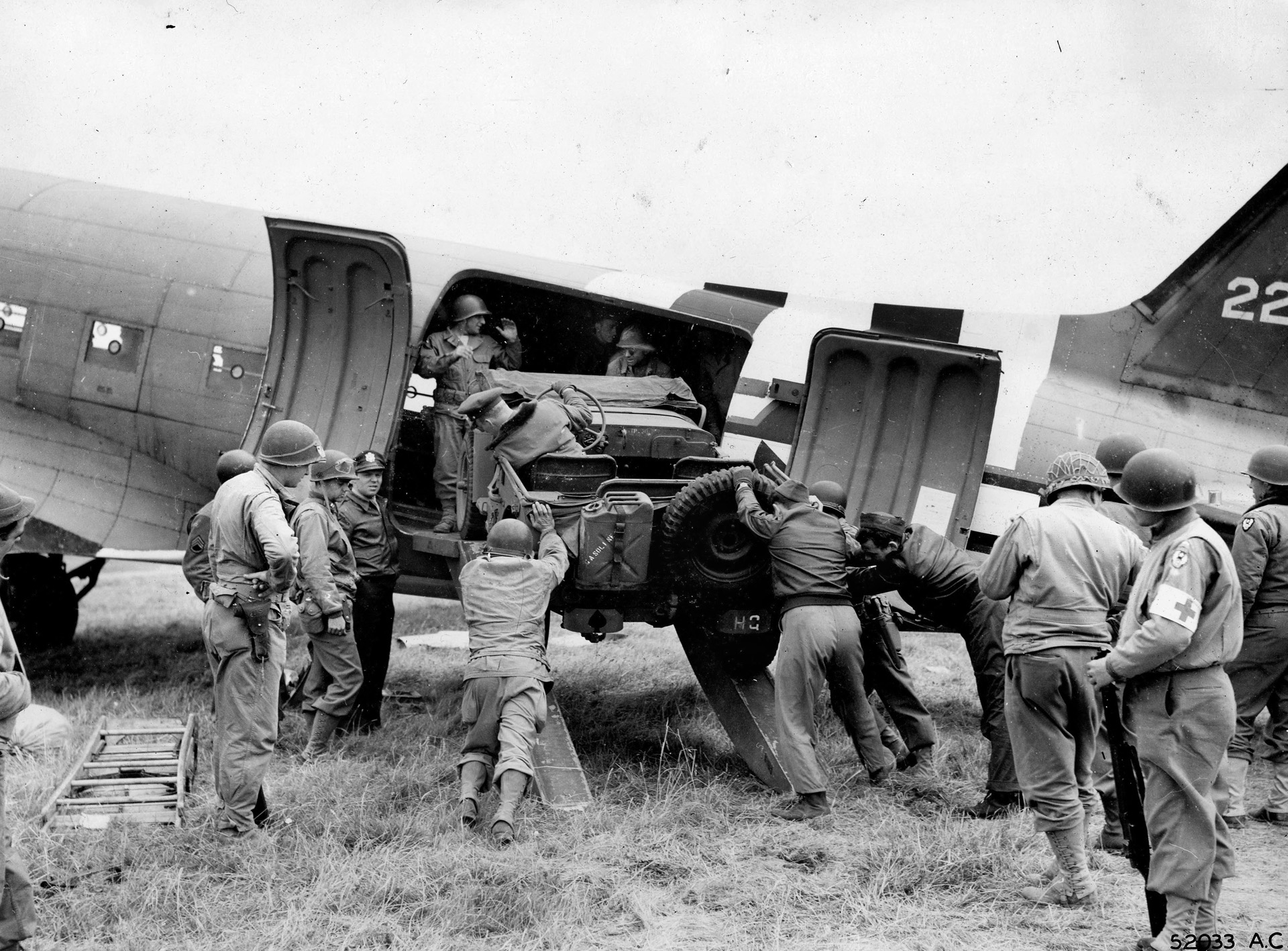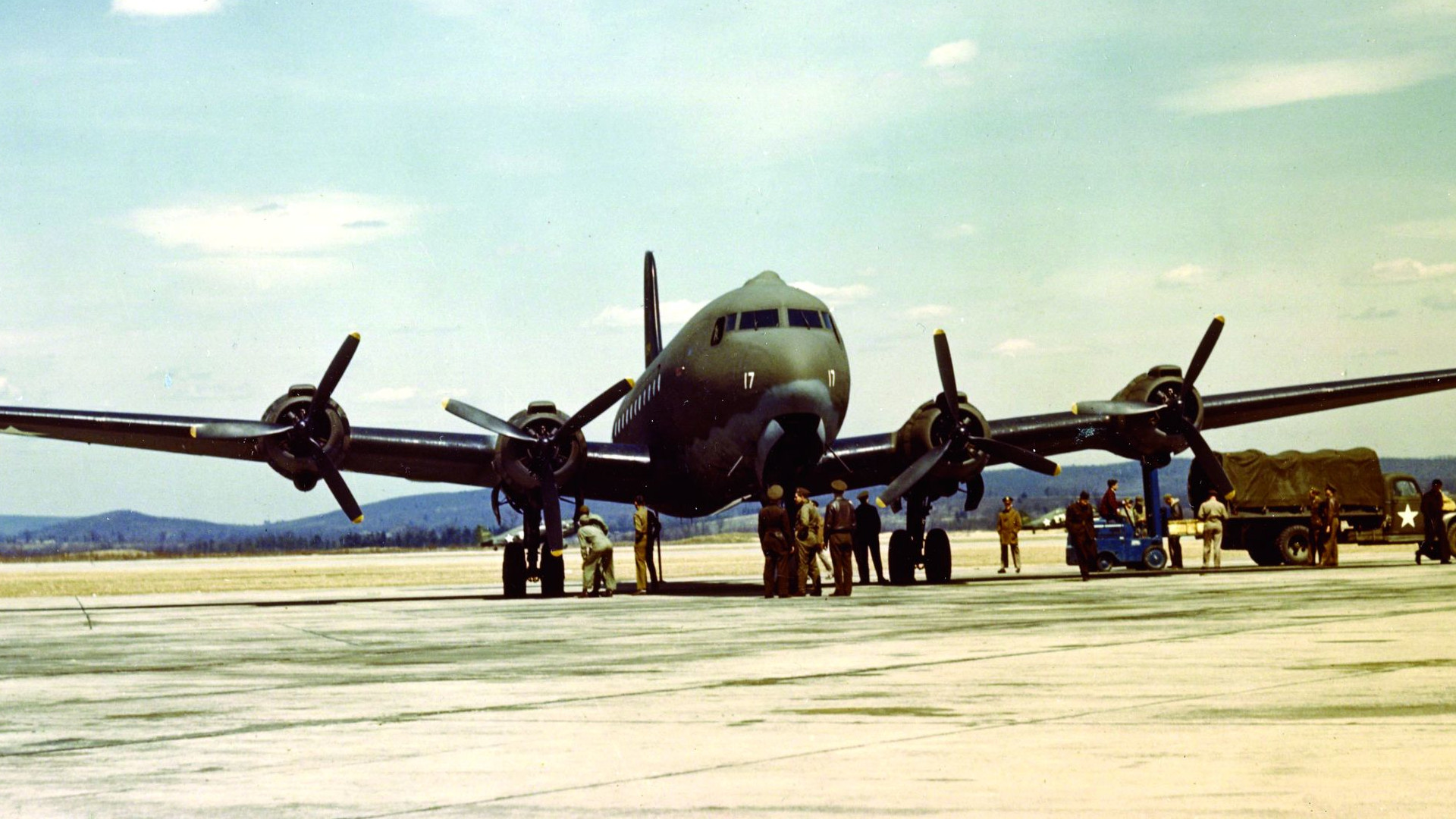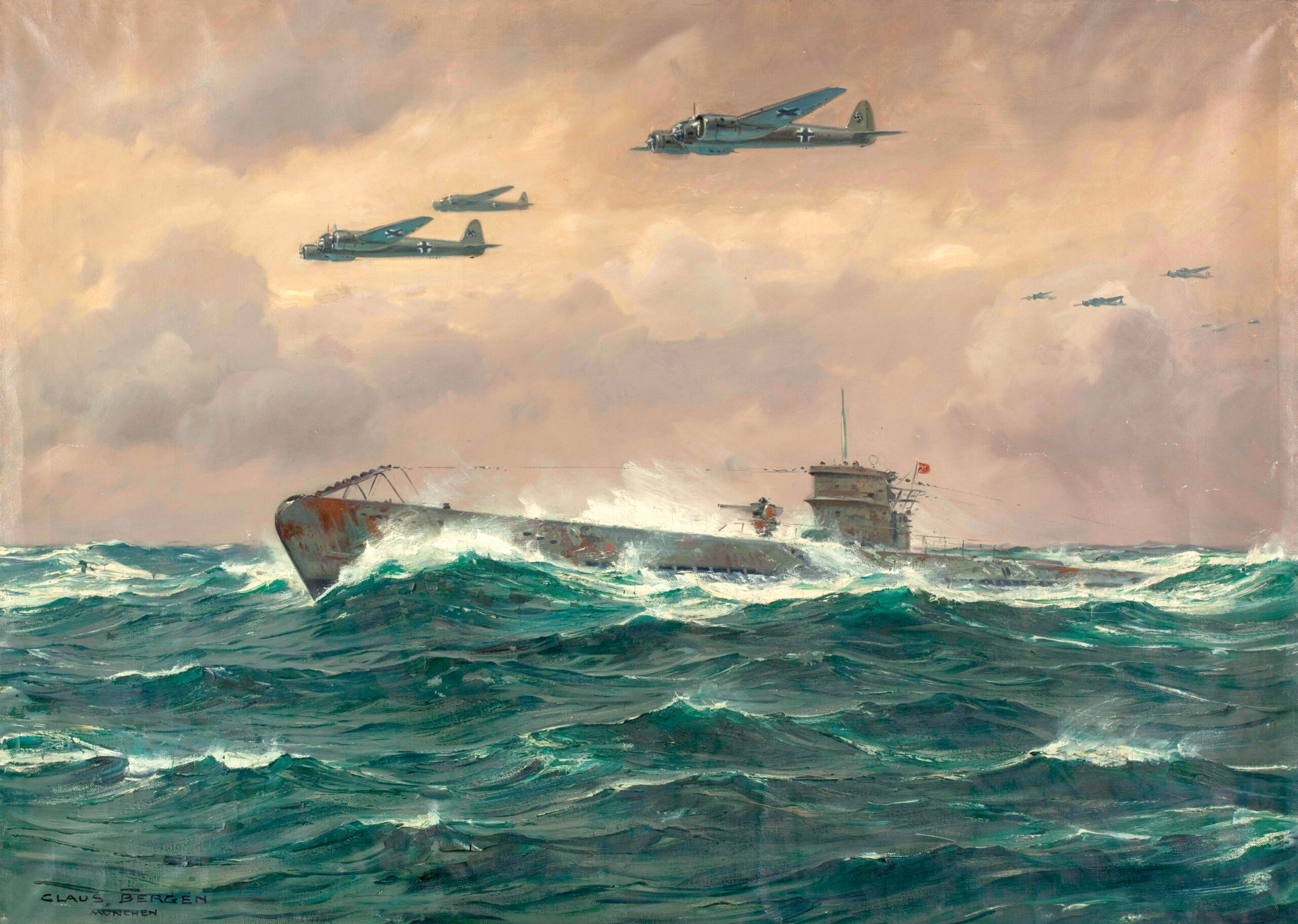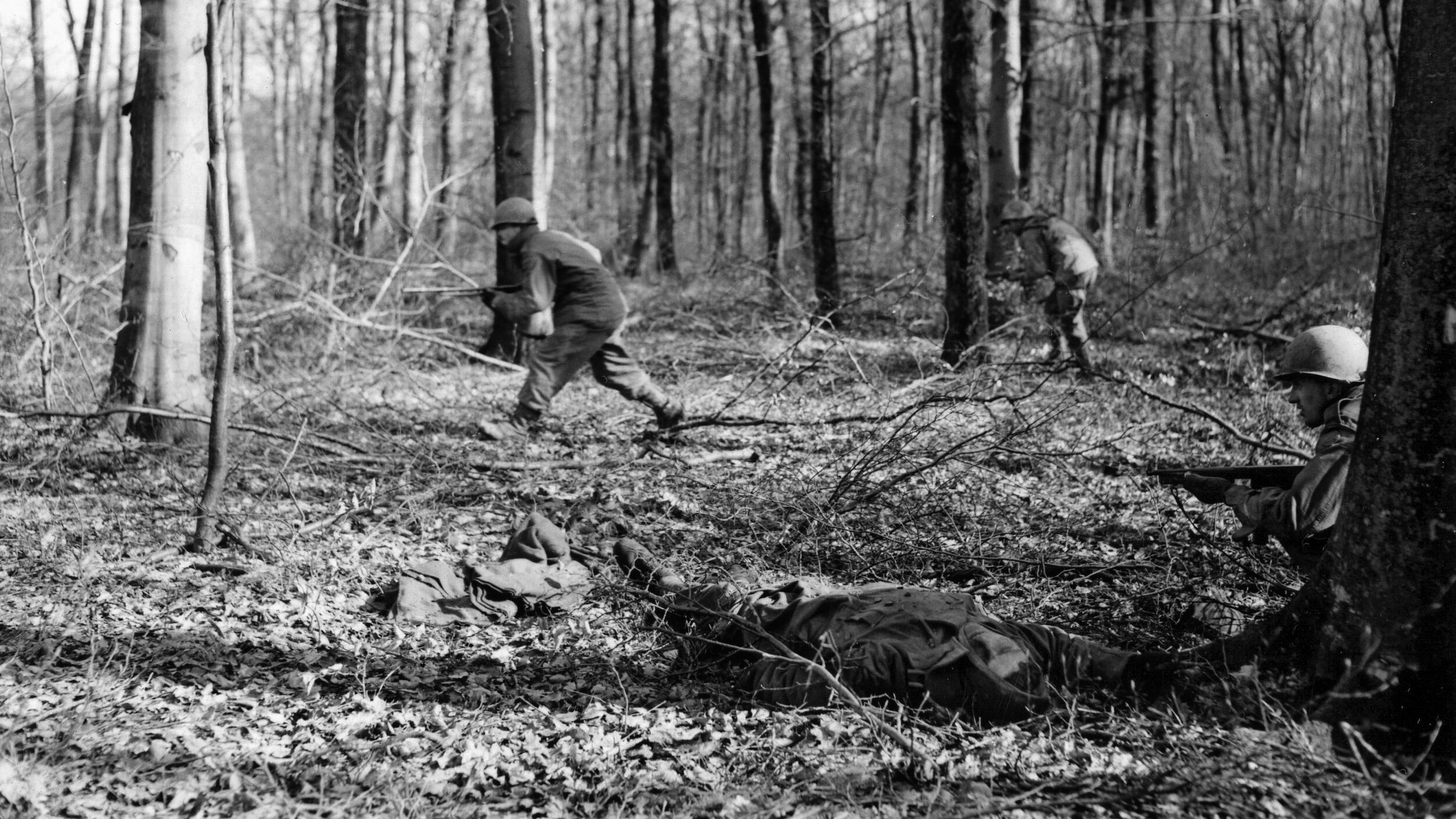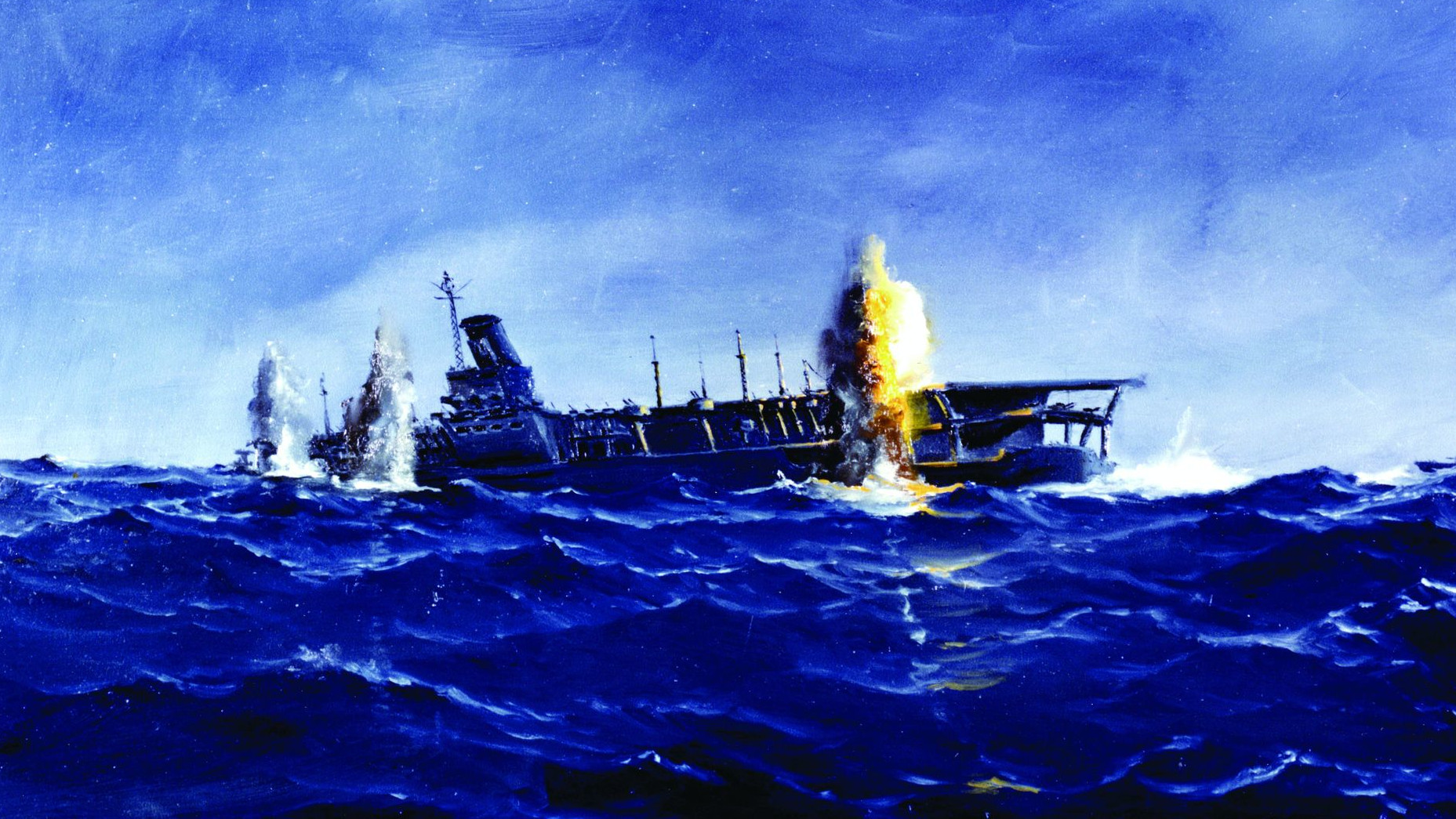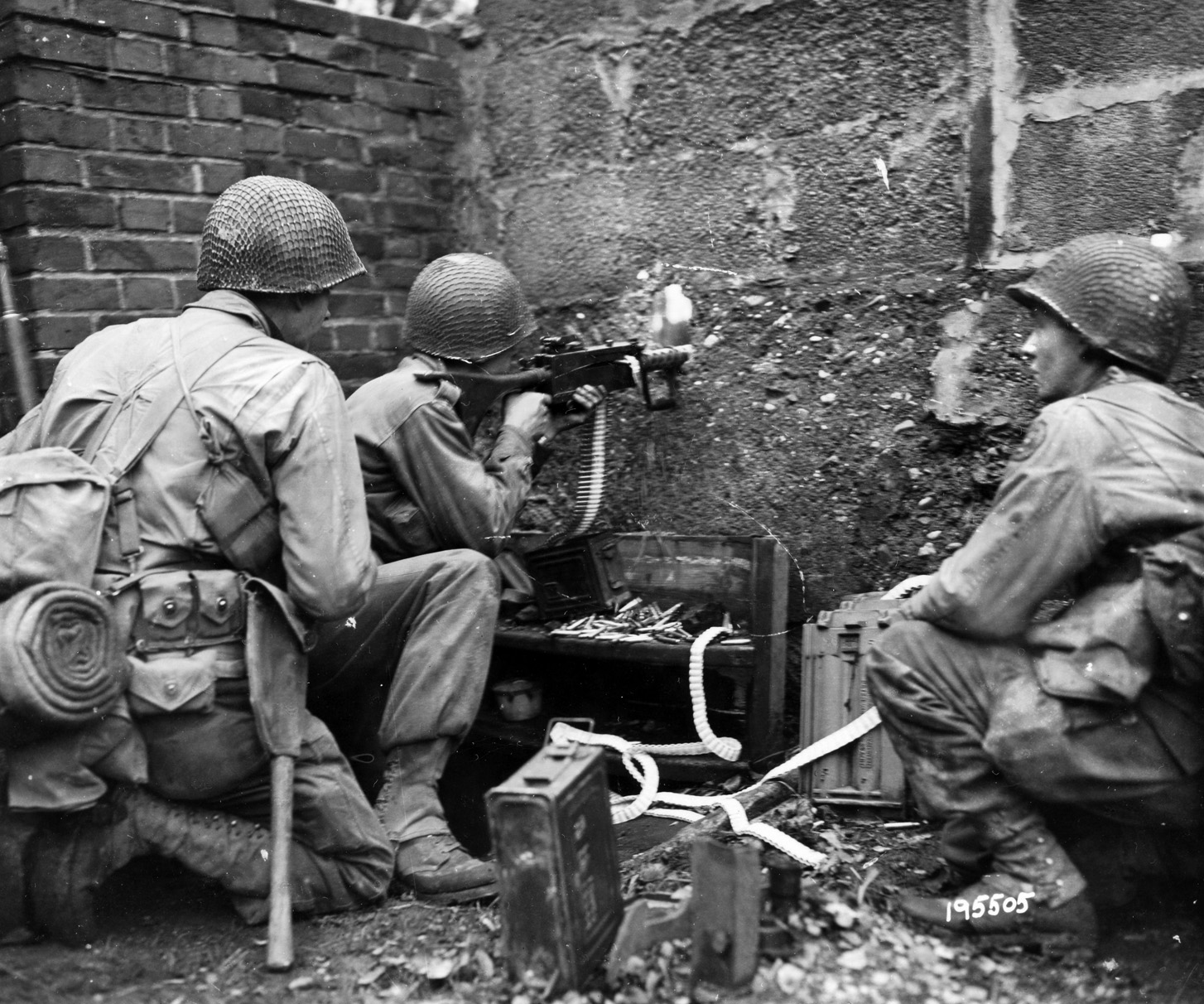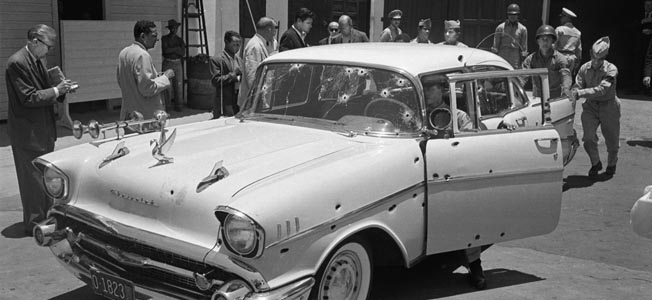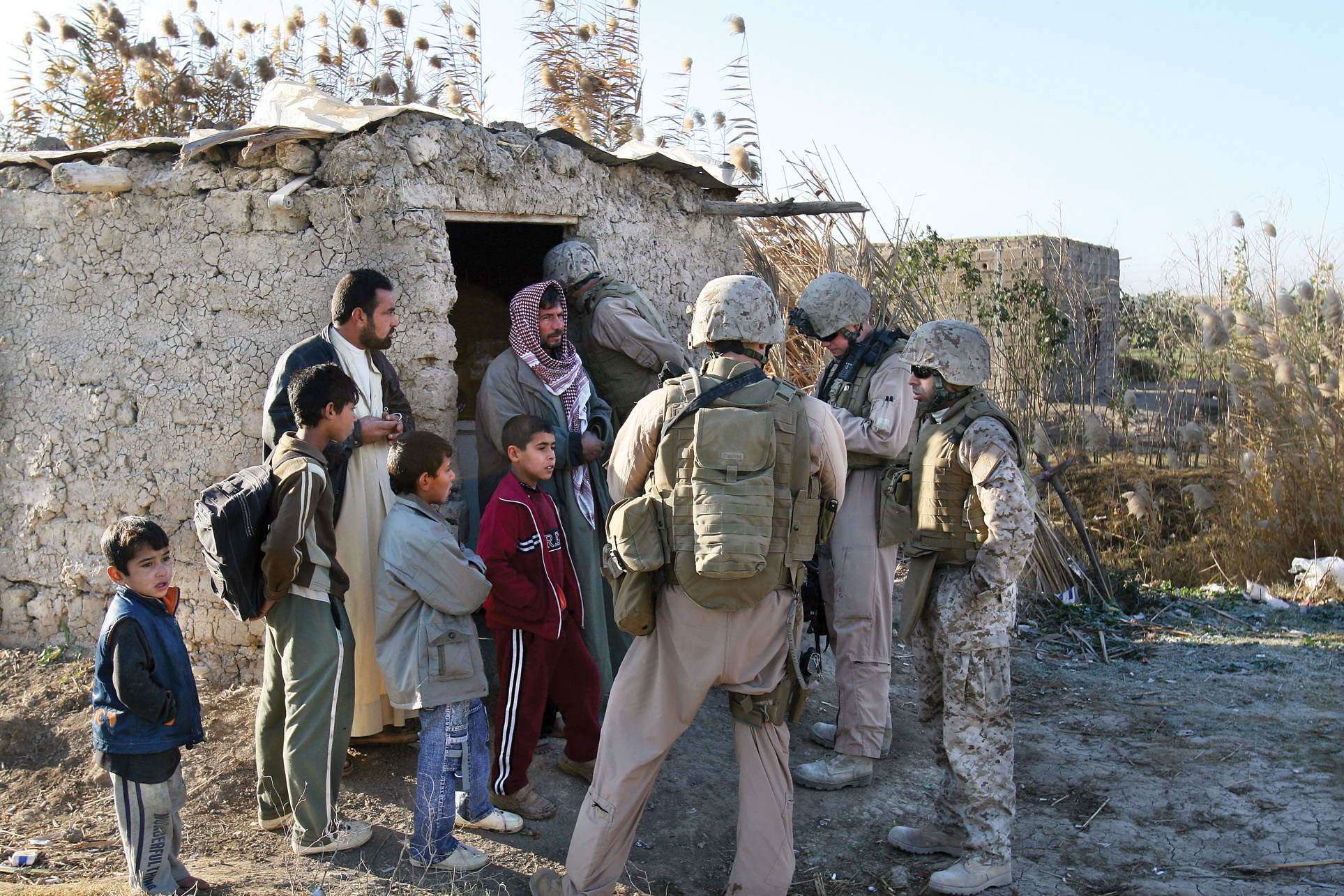By Patricia Overman
“Flying supply missions with the 435th Troop Carrier Group, or any tactical group of IX Troop Carrier Command, is a combination of taking a physical beating and sweating out land and aerial war hazards”
—Michael Seaman, Warweek Staff
Writer, Stars and Stripes, April 29, 1945
By April 1945 the Allied Armies were racing east as German resistance crumbled. The U.S. Army Air Forces Troop Carrier Command (TCC), which had dropped paratroopers and towed gliders in all the airborne insertions in the European Theater of Operations (ETO) and which had, as recently as March 24, dropped and towed the entire 17th Airborne Division across the Rhine River, suddenly found its mission radically modified.
Until the port of Antwerp was opened in October 1944, the availability of supplies limited the ability of the various armies to advance and was responsible for some of the more famous conflicts between Allied generals as they competed for these critical resources. By April, however, several ports were in full swing. The problem now became the transportation of these supplies.
In early March it was recognized that Patton’s Third Army supply lines would become greatly “extended and restricted” as it moved across the Rhine into Germany. The last major operation of World War II and the largest single airborne lift in the history of the war, Operation Varsity, occurred on March 24, 1945. It marked the end for the Third Reich.
From this point on the Allied army was a fast-moving force sweeping up the German Army faster than the ground supplies could keep up. By March 26, five armored and 15 infantry divisions had crossed the Rhine. The Allies soon realized just how effective their bombing campaign against the German transportation systems had been.
As predicted, no railroad bridges were in operation. The retreating Germans had destroyed most of the few remaining road bridges that crossed the Rhine and Moselle Rivers. The number of trucks available to the Americans, British, and Canadians was inadequate for the task and, even if they had an unlimited number of vehicles, the minimal number of bridges that had been constructed or repaired were so crowded with tactical vehicles that their usual motor transport, the Redball Express, was unable to keep up with the demand.
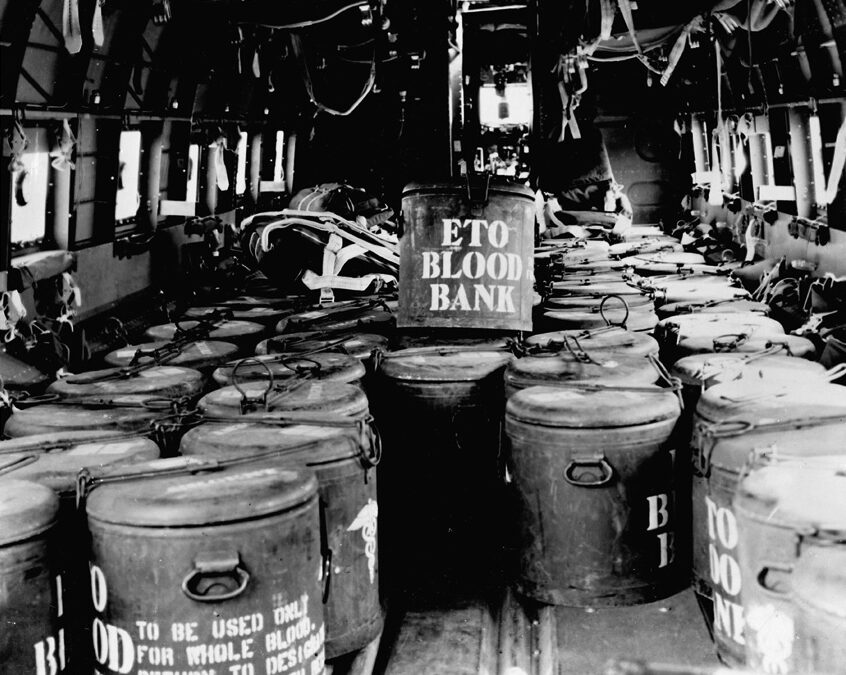
Then, of course, there was the German Army, which had not yet given up the fight. So it fell to the IX TCC to deliver much of the most critically needed supplies. Between March 30 and May 9, 22 percent of all gasoline supplied to the Third Army was delivered by air lift.
In the weeks just before and after the final German defeat, the resupply situation was not relieved but, in fact, increased a hundred-fold. To meet this challenge, an almost inconceivable amount of material was rapidly moved to the front lines in what came to be called “The Flying Pipeline.”
The beginning of every Troop Carrier Squadron (TCS) report for April 1945 starts with similar words. “The month of April was the most active in the history of this troop carrier squadron.”
These upbeat reports were written with pride, describing the delivery of medical supplies, litters, blood, wiring, ammunition, gasoline, food, and other supplies needed by a rapidly advancing Allied force. These were the IX TCC’s most demanding days of the war as each squadron transported an unprecedented amount of supplies to the ground forces in a short amount of time, then returned with wounded troops, POWs, and hundreds of thousands of displaced persons.
This was the first time in the war’s history that regular resupply missions going to the front were classified as combat missions, and the time specified was March 30 through April 23, 1945. The Troop Carrier Groups (TCGs), which had been dropping paratroopers, towing gliders, and delivering supplies to combat areas were now working nonstop to supplant the ground supply line.
These crews went from flying two to three missions a week to flying two or three missions a day in tight formation through the small corridors that armored columns had created within the war zone. In addition to the dramatic increase in their workload, they faced many other challenges.
The first problem was the condition of the many liberated airfields throughout Germany. These airfields were called Advance Landing Grounds (ALGs), and most were, at least initially, captured German airfields. As soon as an ALG was “secured and repaired” by the aviation engineers attached to the corps, supplies were then called forward. These forward airfields were often only used for a couple of days. Then, as the ground forces progressed, the ALGs were moved forward, leapfrogging airfield to airfield.
According to squadron reports, “secured and repaired” was a rather optimistic description. The pilots were, in fact, landing their C-47s on bomb-rutted runways. As late as May, the 87th TCS (438th TCG) Operations Department reported, “Five tires were changed because of blowouts and six others because of bad cuts and tire bruises. These cuts and bruises were mostly caused by the condition of landing strips in Germany.”
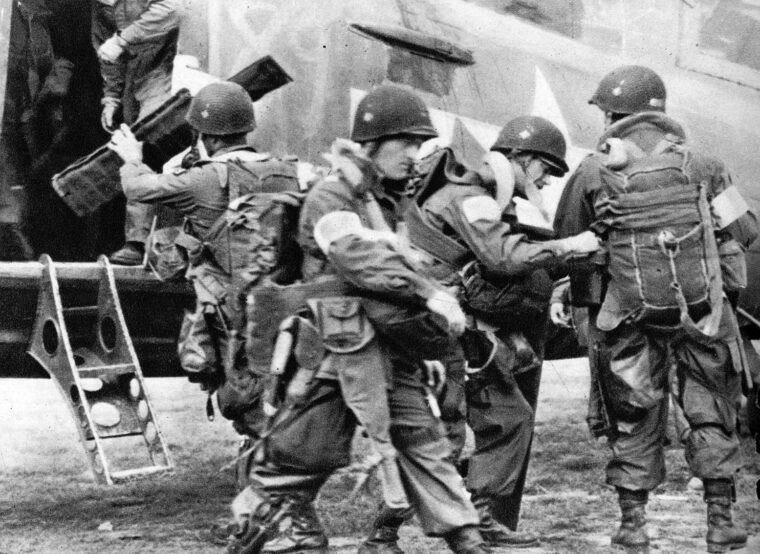
Keeping the planes flying was another problem. Ground crews were especially taxed with maintaining engines and repairing damaged planes returning from the combat zone. All mechanics were affected. The 88th TCS, 438th TCG, Maintenance Department reported for the month of April, “Due to constant flying, the radio mechanics had a difficult time keeping the aircraft radios in working order. It was necessary for them to return at nights and fix the planes as they landed.”
In the war diary of the 85th TCS, 437th Group, the Engineering Department reported that all its maintenance was being done at night due to constant daytime flying: “Maintenance work at night, especially field maintenance, offers many problems and difficulties not encountered during the normal day, due mostly to the fact sufficient lighting equipment is difficult to obtain.”
The report went on to state, “Airplanes of this unit have now been in active service as much as 16 months, during which time no task was considered too small or too great. This meant landing on the worst type of runways and hauling material of all descriptions. The airplanes have withstood this punishment well, but as is true in all equipment, constant inspection and repairs, including all echelons of repair, are needed. The strain is beginning to tell.”
Due to the sheer number of daily missions being flown, luck was also against them. The more they flew, the greater the chance for accidents. The 50th TCS, 314th TCG lost five planes in one day in three separate incidents. By the end of the day the report read, “Two (2) a/c damaged, extent unknown …Three (3) a/c missing …”
By April 7 it was determined that the 50th Squadron had lost four planes and one badly damaged as well as a greater loss of 15 crew members who had died in the line of duty—all due to bad weather. The 47th TCS of the 313th TCG was also hit hard when it lost two planes in the month of April after having just lost four planes and having four others badly damaged with a loss of 11 crewmen on March 24 during Operation Varsity.
On April 16, 1st Lt. Vincent K. Prince and his crew were returning from Grove, England, with engine trouble. While on a second landing attempt the plane crashed into a brick building outside ALG A-87, near Charleroi, France. According to reports, “Co-pilot Lt. Homer D. Anderson miraculously escaped death when he was hurled clear of the demolished plane, but the popular Lt. Prince, who had served as chairman of a committee which obtained girls for the gala officers’ party the night before, and the enlisted crewmen were all killed instantly.”
Again on April 27 one of five planes crashed near Hesdin, France, when the crew encountered bad weather, forcing them to fly on instruments. They crashed into a hillside a mile northwest of Hesdin, killing Lieutenant Edward Koenig and his entire crew. Fatigue was no doubt a contributing factor in many of these accidents.
Not only were the pilots flying constantly, they were getting a physical workout as well. More than one pilot and ground crew interviewed said they had never been in better physical shape than during April 1945. Once on the airfield, the entire crew helped move wiring, ammunition, medical supplies, and hundreds of five-gallon jerry cans filled with high-octane gasoline.
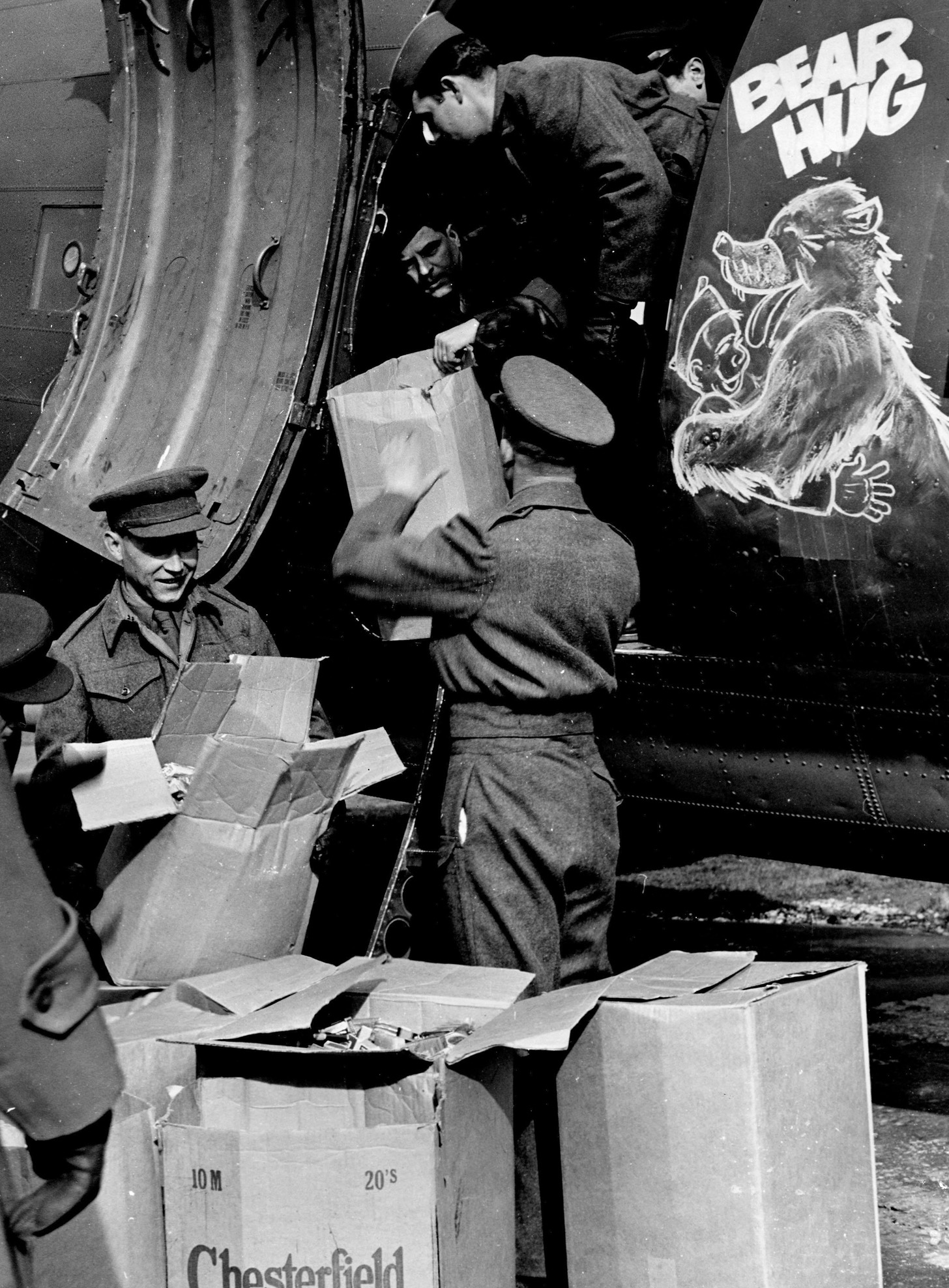
The pilots’ idea of being in shape, however, referred to their muscles and not their overall health. They were eating poorly and lacked sleep. They grabbed a ration can whenever they could and slept on their planes when bad weather kept them from returning to their base.
The demanding pace also resulted in deadly mistakes in operational planning. Due to bad weather on April 9, a 441st TCG resupply mission to ALG R-1, Wenigenlupnitz, Germany, was cancelled until the following morning. The next morning the weather caused the cancellation of that morning’s scheduled mission so the previous day’s planes and the morning planes were both rescheduled for the afternoon.
Normally, mission aircraft would fly in a tight formation until about 40 to 50 miles from the field, at which time they would descend to 200 or 300 feet and form into a close single file to avoid the German radar. However, on this day, because there had not been an adjustment to the afternoon flight schedule, they arrived as a “big bunch of planes” at the crowded German airfield with no place to land.
To make matters worse, because there were so many planes in the air, their altitude was 2,000 to 3,000 feet. Of course the Germans noticed all these tantalizing targets loitering in the air. Captain Richard Mudrow, 441st TCG, would later write in his journal, “The Germans sent a fighter over who had a fine time shooting down planes. It shot down 6 or 7 before our fighters could get there. [Captain Merril] Meaker … our flight leader … was on the final approach when this guy shot him down. Of course the whole crew was killed on that one.”
Another problem was the German Army, as these missions were being flown in the midst of battle. Planes were shot down and men unloading on the supposedly “secured” airfields were strafed, received sniper fire, or dodged mortar rounds. It was this combat environment that was the most distressing for these unarmed resupply personnel.
At ALG R-5, Crailsheim, Germany, on April 9, a badly needed resupply mission ended in success even through sporadic mortar fire resulted in the loss of one plane. The 10th Armored Division had been cut off from its support element while spearheading a drive into Germany. Its regular supply convoy had been destroyed by the desperate enemy, and the only hope for the 10th was air resupply. The 10th called for ammunition and gasoline. The 441st TCG was assigned the mission.
During the aircrew’s briefing, it was decided that the route would take them over Bad Mergentheim and they would approach Crailsheim from the north. There were 16 planes on this sortie. The first four planes were from the 301st TCS led by Captain Frederick J. Trenck, squadron operations officer, and Republic P-47 Thunderbolt fighter escorts rode high and alongside.
The flights crossed the enemy roadblock at Bartenstein, peeled into a single line close formation, and were on the ground at the north end of the field within seconds of each other. The first thing they encountered was enemy mortar and artillery fire. There was no place to take cover so they unloaded as the mortar rounds fell all around their planes.
Unknown to the crews on the ground, the P-47s were busy with their own problems. They were in a dogfight, shooting down 10 German fighters and losing one of their own. Just as they finished unloading, 1st Lt. John J. Keith was starting the engines of his plane, which was third in line, when he received a mortar hit that put a hole through the cabin. Another hit took off the tail, and the navigator, Lieutenant Earl H. Ritz, was hit with shrapnel in the face and legs.
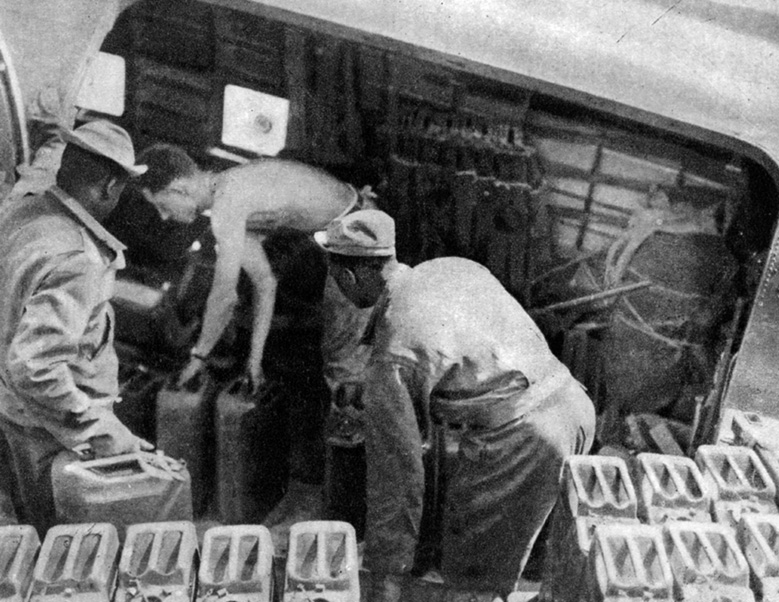
According to the intelligence report, “The crews were not waiting to qualify for the ‘Combat Infantryman’s Badge,’ and proceeded to get the hell off the field. The planes dodged shell holes as they picked up speed, then they were splattered with stones and dirt from bursts of gunfire, at which time the pilots decided not to avoid the mortar holes but to put the throttles forward and head across the field and take off from where they were.”
By now Lieutenant Keith had gathered his crew, co-pilot Flight Officer William C. Minshall, Crew Chief Staff Sgt. Junior W. Day, Radio Operator Staff Sgt. Howard J. Neumann, and the wounded navigator, and they were off to the side of the runway thumbing a ride from one of the 99th Squadron planes moving down the runway. Captain Carl U. O’Neil stopped on takeoff, despite the incoming mortar rounds, to pick up Keith and his crew.
Everyone made it back to home base, and the squadron’s latest replacement, Navigator Ritz, had qualified for a Purple Heart on his first combat mission. From a story in the Stars and Stripes, published a month later, the airmen learned why the shelling was so sporadic. The German infantry had lost their air spotter when the P-47s made their presence known.
Major General Paul Williams, commander of IX TCC, conveyed a letter of commendation to the men of the 441st from Maj. Gen. Edward H. Brooks: “The supplies thus obtained by our armor contributed materially to their ability successfully to continue operations resulting in the elimination of many Germans and the capture of over 2,000. In addition, 46 of our walking wounded were evacuated.
“I consider the supply by the C-47s in this action to have been an outstanding event in the history of air-ground cooperation. With such support armor now can operate in an even more aggressive and daring role than heretofore. I salute the officers and men responsible for this splendid accomplishment.”
In reading the Stars and Stripes article and the letter of commendation, one can clearly see the effective coordination of the various military units involved in one mission.
The reality that these were combat missions was further brought home as more resupply missions reported strafing by what was left of the Luftwaffe or being fired on by German ground forces hidden near the airfields. Interestingly, these reports of air attacks seemed to describe a pattern of only one strafing run and then the German planes would be gone.
Second Lieutenant Robert Taylor, 88th TCS, 438th TCG, was the flight leader on one such mission. He said, “As my planes flew in sight of the airfield and I was preparing to lead my Squadron to land, we encountered an Me-109 strafing the airfield. I yelled ‘Scatter!’ into my radio to the planes and they did just that, leaving the landing formation and flying away from the field. I was still in sight of the 109 and watched as he left after only one strafing.”
Taylor wondered why the 109 didn’t stay and annihilate them since the C-47s that were lined up on the airfield were unarmed. He later met some of these German pilots in a bar after the war and learned the answer: “The Luftwaffe’s resources were so limited, they had only enough ammo and fuel for one run.” Even though the Luftwaffe was severely restricted, the strafing still resulted in damage and casualties.
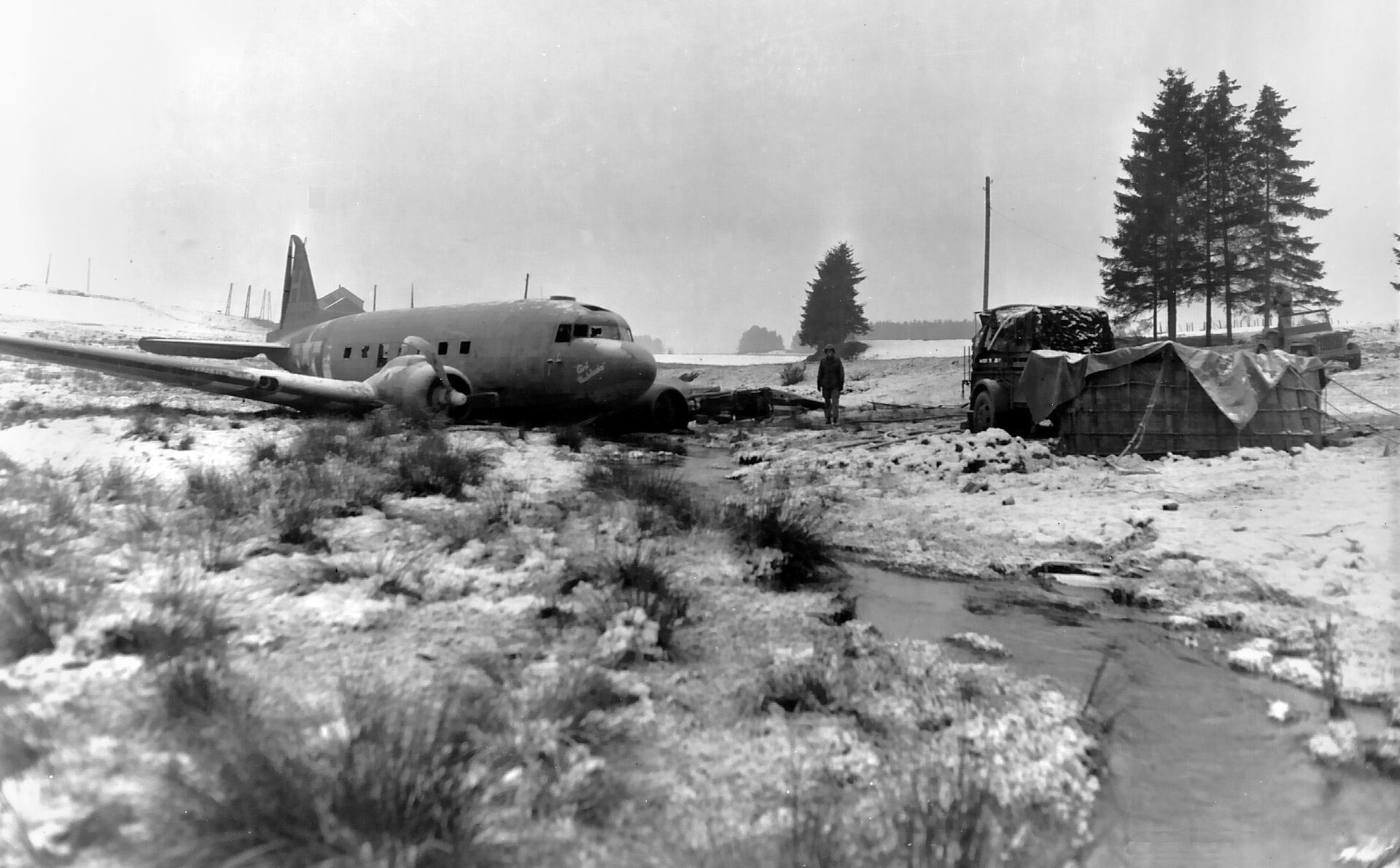
Probably the most ironic incident during these combat resupply days, at a time when the POWs were being liberated, was the downing of a C-47 resulting in the crew themselves becoming POWs for 10 days. This occurred on April 4, during a 435th TCG resupply mission to General Courtney Hodges’ U.S. First Army. First Lt. Ervin E. Williams and his crew took off from ALG A-48, Bretigny, France, with 600 gallons of gasoline in five-gallon jerry cans headed to Germany. Poor visibility caused the crew to fly at an altitude of only 200 feet. About two miles past the Rhine River they encountered 20mm antiaircraft fire.
According to Williams, “One burst of flak hit the under-fuselage of the cabin, and immediately the cargo-space became a raging inferno.”
Remember the 600 gallons of gasoline?
“Another burst caught us in both wings, severing our gas lines and killing our engines and now setting the entire front of the ship on fire. Luckily the four of us were in the forward part of the plane at the time of the first hit, so no one was scorched. Sgt. Wilson, our radio operator, held the cabin door closed to keep out the heat and flames, while the crew chief, T/Sgt. Winkler, removed the escape hatch above us to prepare for a quick exit on landing.
“I turned the ship into the wind, and headed for a small farm field. I had to keep my landing gear up for fear of tipping over and slid in on the ship’s belly. Don’t know how, but we made it. The crew quickly got out. I was the last one out and, as I left, the flames were in the cockpit and I could feel the fire on my back.”
The crew made an attempt to hide in a rhubarb patch. After about 20 minutes the co-pilot, Flight Officer Clarence Collier, decided to make a run for a ravine. That was a mistake; the minute he started running he was dodging bullets and ended up in the arms of the Nazis.
The next thing Lieutenant Williams saw was a rifle barrel pointed down at him, and the entire crew was captured. They were subjected to mental torture by being lined up and given cigarettes to smoke while the German Officers dickered for their lives. In the end they added them to 1,000 other Russian, French, English, and American POWs being marched 125 miles. As they marched they were strafed by their own P-47s again and again.
Ten days later, on April 14, they found themselves being liberated by the 78th “Lightning” Infantry Division, which stormed over a hillside while the hungry prisoners whooped with joy. Lieutenant Williams said, “Even cold K-rations tasted wonderful to us; we had been living on only black bread. However, the chicken dinner prepared for us on the following day is what made us realize that we were safe again.”
As the demands on the C-47 pilots and crews reached the breaking point, another group of TC pilots found the demand for their services had come to a complete halt. A total of five combat glider missions had been flown in the ETO and, with the prospects for any further airborne operations nil, the glider pilots were determined not to be left out. They began volunteering to supplement the C-47 crews, first as auxiliary navigators (several glider pilots had completed navigator school in January and February) and as auxiliary co-pilots.
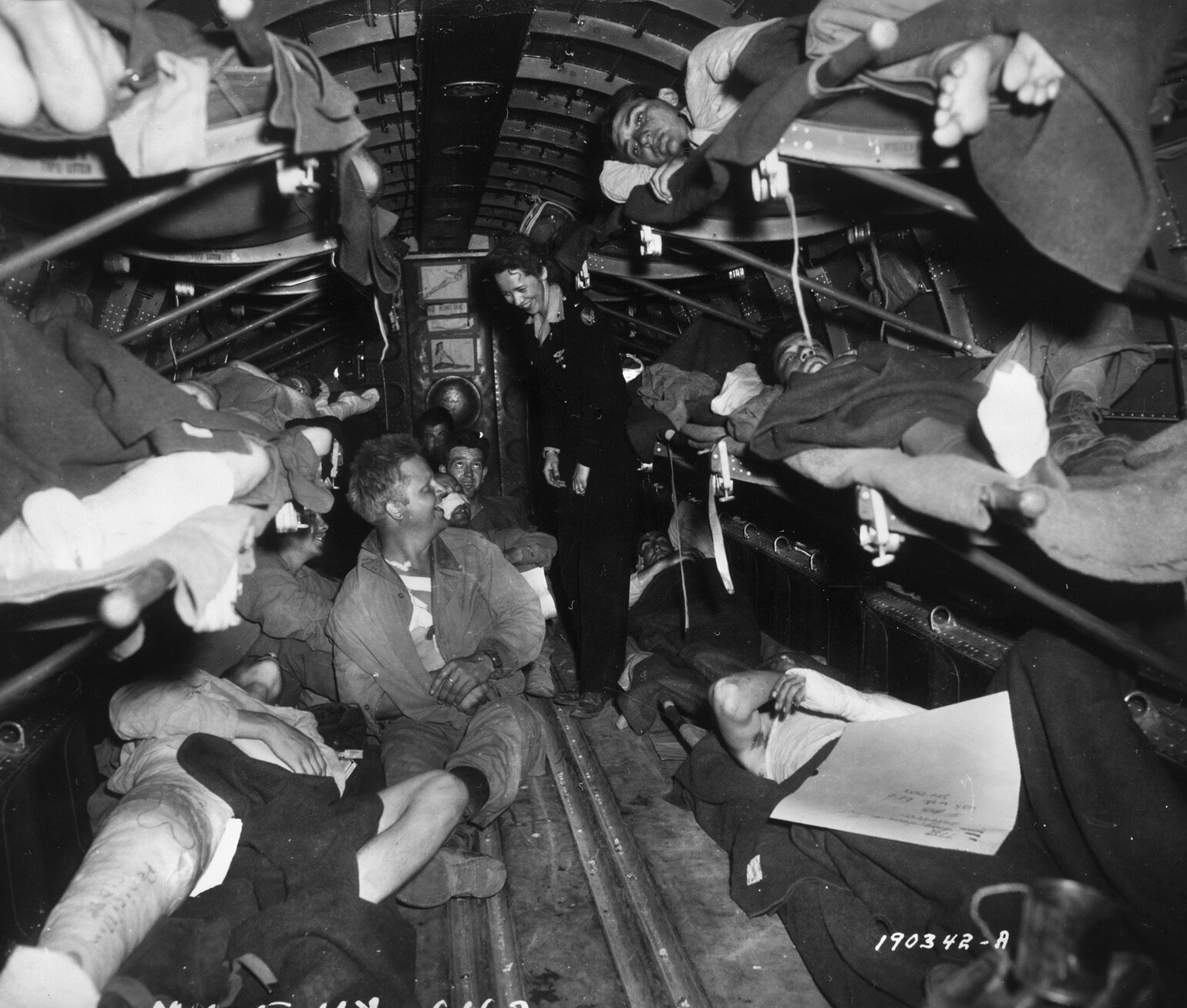
Flight Officer Claude “Chuck” Berry, a glider pilot with the 439th TCG, flew five combat missions in April as a co-pilot, logging a total of 32.5 hours. Berry would later go on to fly L-19 “Bird Dogs” in Korea and a HU-1 “Huey” helicopter in Vietnam, accumulating an Air Medal with 29 Oak Leaf Clusters over the course of the three wars.
Flight Officer Bob Swenson, who flew a glider into Germany and fought alongside the 17th Airborne in Operation Varsity while on detached service with the 435th TCG, was more proud of his contribution in delivering medical supplies and evacuating POWs as a navigator with the 434th TCG.
Although it was effective, air transportation was not exactly efficient. Three gallons of aviation gasoline were burned for every gallon delivered. However, since the deliveries were made to the forward area there was a considerable savings in time. Supply points were established at the airfields, thereby alleviating the need for trucks to move gasoline to a depot for distribution. On occasion, the airfield was so close to the action that the gasoline was moved off the planes and transferred directly into armored vehicles, trucks, and jeeps.
The generals of the 3rd, 4th, 10th, and 12th Armored Divisions, as well as field commanders, testified to the 12th Army Group, which was evaluating the air supply and evacuation, that these emergency air supplies “spelled the difference between victory and stalemate. So fast were American tanks rolling through Germany that airlift became the most effective means of keeping them supplied. Without the C-47s pumping life-blood into the armored spearheads, the breakneck advance would never have been maintained.”
According to the First Army’s spokesman, the fuel they delivered at critical times made the difference between success and failure. General Omar Bradley pointed out two vital facts: (1) Air supply and evacuation is the logistical corollary to exploitation of a breakthrough. (2) Air lift assumed an importance far beyond the relatively small proportion of tonnage moved because it delivered critical items at the critical time and place, and assured rapid evacuation of casualties.
The IX TCC delivered more supplies in April 1945 than it had since the beginning of the war. On one day in April the groups delivered more supplies than were delivered for the entire month of February. But as April waned, the loads began to change. While gasoline was still a major transport commodity, the amounts transported were diminishing. Although daily flight missions were still at a high level, the physical strain began transitioning into a mental strain as the crews became enmeshed in the most tragic story of the war, the discovery of the forced labor camps.
Their missions were now directed to ALGs coded R-16, R-19, R-7, R-66, R-73, R-48, and R-70 and loaded with thousands of litters, food, and medical supplies. Their return loads were British, French, Belgian, Russian, and Dutch prisoners of war, as well as slave laborers from the sub-camps within the concentration camps of Bergen-Belsen, Buchenwald, Nordhausen, Flossenburg, Dachau, and others.
The crews could not believe what they were seeing when they landed at these camps. Every crewmember has had difficulty talking about their experience.
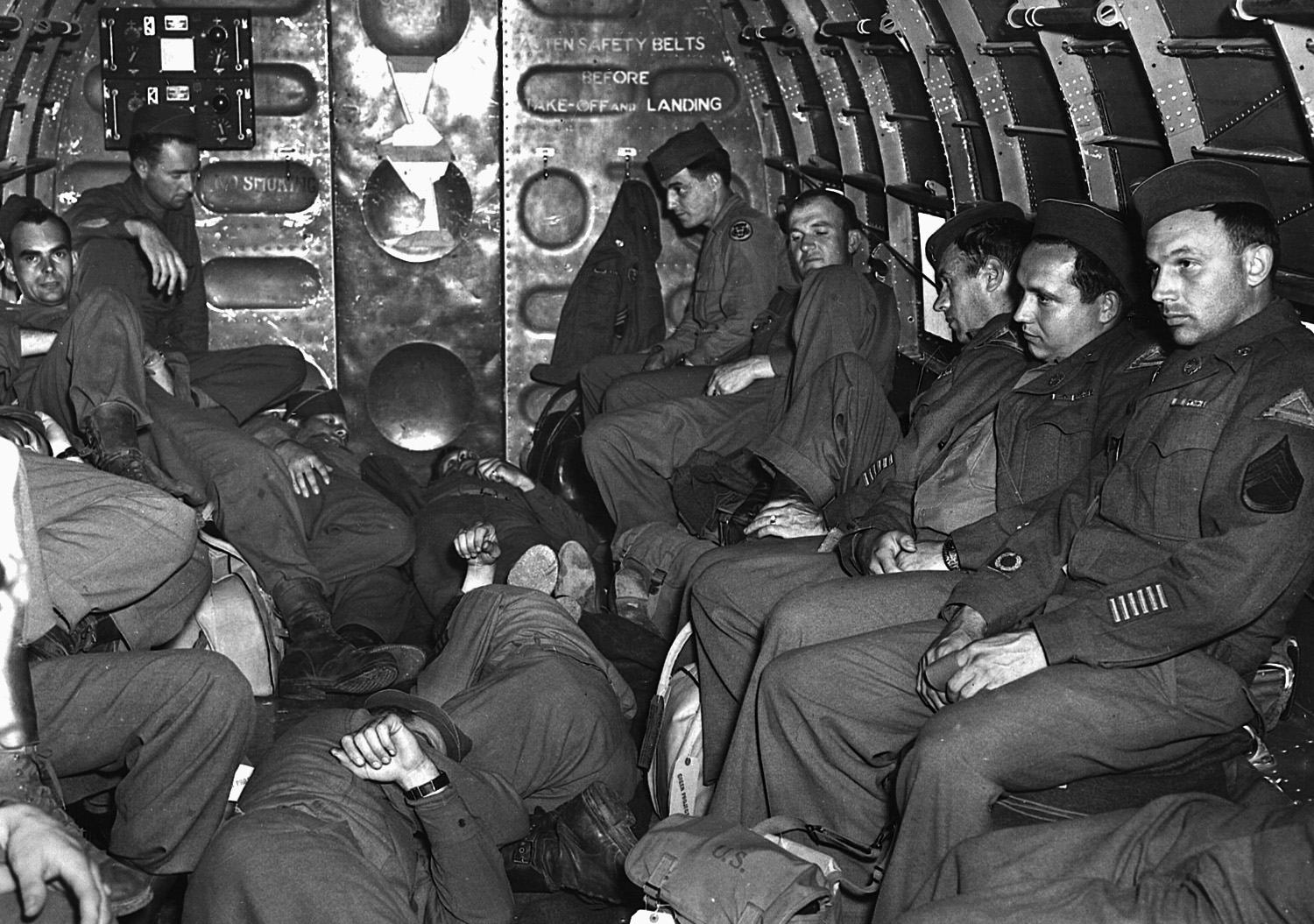
On April 21, the 438th TCG flew 18 planes to pick up 375 French prisoners of war from the labor camps of Nordhausen, where they had been forced to work in the underground factories building V-2 rockets. Colonel (then Major) Robert Gates, the commanding officer of the 88th TCS, remembered that day vividly 70 years later.
“I commanded the 88th Troop Carrier Squadron during the war, which was part of the 438th Troop Carrier Group that led the invasion into Normandy. During the ‘Flying Pipeline,’ our squadron carried 3,496 patients from France, Belgium, Holland, and Germany to Britain. We carried 10,313 POWs and enslaved civilians. We carried Displaced Persons (DP) from Dachau, Bergen-Belsen, Nordhausen, and other camps.
“One of many major memories of the war is returning to Paris at Le Bourget airport with 18 airplanes of my squadron full of French civilians that had been shanghaied by the German bastards and made to work as slaves. I vividly remember one Frenchman who just that morning had the fingers on one hand smashed by a hammer-wielding Nazi guard!! General de Gaulle was there to meet us at Le Bourget Air Field with a military band playing the “Marseillaise.”
“As the Frenchmen exited the plane, they kissed the ground and, although most were extremely feeble, they struggled to stand at attention as de Gaulle came by to greet each one of them. It was one helluva moving experience and not one of the crews had a dry eye.”
There were many such stories in every group. Lieutenant Alan S. Boyd (who would be appointed by President Lyndon Johnson as the first U.S. Secretary of Transportation in 1967) remembered well what he experienced the first time his 436th Group picked up Russian repatriates:
“God they were scarecrows. I’ll never forget they were just bags of bones. The first one came up to my plane, and as I was getting ready to help him into the plane, he fell to his knees and began kissing my shoes; it made me cry. I had no idea what to do. I was trying to get him to get up but he just kept kissing my shoes. I felt all kinds of emotions from humility, embarrassment, surprise, confusion, pride, bewilderment, anger; you can’t imagine the sort of thing that humans do to each other. I cannot figure out how people can be so inhuman to other nationalities.”
Flight Officer Bob Swenson said some of the repatriates they picked up from concentration camps did not survive the trip home and died on their plane. He also noted that after delivering the repatriates and returning to their bases the planes would have to be fumigated for lice.
Lieutenant George Collins of the 89th TCS, 438th TCG remembered clearly one flight in which they had Russians on board and there was a woman whose baby was crying. The altitude at which Collins was flying had severe turbulence, so he decided to leave the formation and increased his altitude to where the air was smoother. The baby stopped crying.
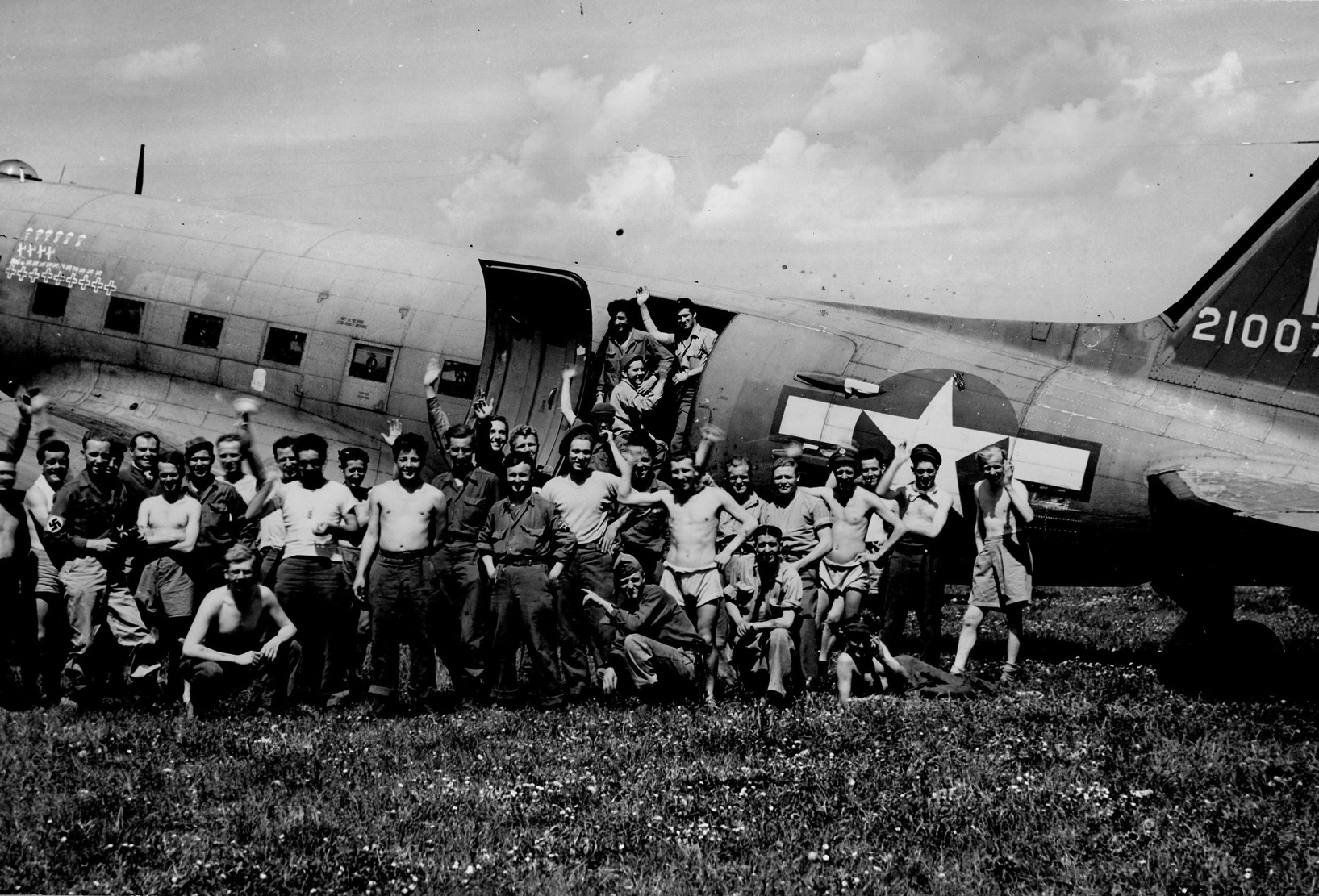
The crews who picked up the Russian POWs and repatriates were not allowed to fly them directly to Russia, but took them to Berlin where they would be trucked back to Russia. The crews’ satisfaction in returning the Soviets was muted by the knowledge that these repatriates would not be treated well once they got home; the Soviet government held the view that their capture by the Germans tainted them as traitors.
To the men who flew these missions, it was the evacuation of the repatriates that was IX TCC’s finest hour. Between April and June 1945, the pipeline became the lifeline for American, British, Russian, Greek, Polish, Australian, Belgian, Indian, Dutch, and Czech repatriates. A total of 273,843 repatriates were flown out of forced labor camps and returned to their homeland or a place of refuge.
Perhaps this operation’s success is best summed up by Supreme Allied Commander Dwight D. Eisenhower’s remarks in a letter to General Paul L. Williams, dated June 15, 1945:
“The great job of flying done by your Command in moving repatriates out of Germany during April and May is one that has given me personal satisfaction of the highest order.
“While all Air Commands participated in this, some 70 percent of Allied repatriates flown from Germany were in aircraft of IX Troop Carrier Command, and your total lift in the two months passed the unbelievable figure of a quarter of a million passengers. To have done this at all is remarkable, but to have done it without a single casualty is perfect.
“Please convey to your Staff and to your crews, my sincere thanks and highest praise for this achievement. You have written a page in Air Force history and in allied cooperation that will live forever.
Sincerely,
Dwight D. Eisenhower.”
